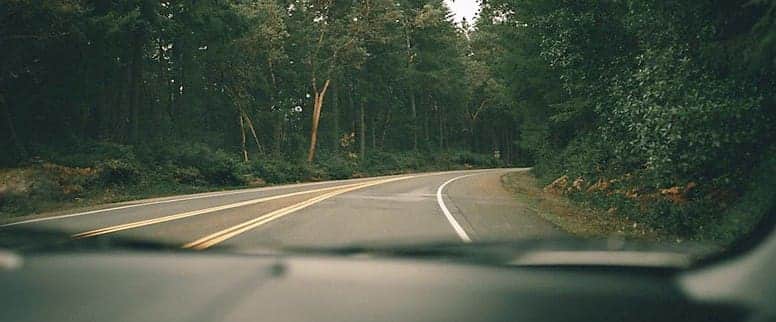Every personal injury case is different; this is an example of a recent hit-and-run crash handled by Coluccio Law. If you have questions about a specific incident, we recommend you talk to a lawyer.
A little over one year ago, Bette was horribly injured in a hit-and-run crash on a Puget Sound island.
In the weeks after the crash, as her medical bills piled up, a relative of Bette’s contacted Coluccio Law for a free consultation. Bette chose us to represent her, and we are proud to say that we recently successfully wrapped up her case.
Here’s what happened to Bette—and what we can learn about hit-and-run crashes from it.
An example of a hit-and-run crash
It was very early on a warm July morning. Bette was driving over a state route bridge, not far from her home, on her way to work, when a car coming from the opposite direction swerved into her lane.
There was nowhere for her to go, and no way to avoid the oncoming car.
Then, a third car coming upon the crash scene didn’t see the blocking collision. That driver struck Bette’s vehicle a second time.
While Bette was unconscious in her car, the driver of the first car got out of the car and fled the scene on foot.
When paramedics arrived, they found that Bette had serious injuries, including a broken leg and a broken arm.
With the help of witnesses, police were able to track down the other driver within hours of the collision. The car he had abandoned at the scene had been previously registered to him.
However, his vehicle registration had expired, and he did not have car insurance.
In the State of Washington, drivers are required to carry a minimum insurance policy of 25/50: $25,000 coverage per person, $50,000 per collision.
What happens when the driver is uninsured?
In Bette’s case, the driver who caused the crash was uninsured.
The driver of the third car, who also struck Bette’s car, had the minimum amount of car insurance: $25,000.
Bette’s injuries were significant. At the time we concluded her personal injury case, her medical bills totaled nearly $375,000.
Her medical bills alone exceeded the other driver’s insurance coverage by nearly $350,000.
Fortunately, Bette also had a car insurance policy that covered her in this situation. Uninsured Motorist / Underinsured Motorist (UM/UIM) pays for damages and injuries if the driver who caused the collision:
- does not have car insurance, or
- does not have enough insurance to pay for all of the damage.
UM/UIM insurance is optional in Washington State. Here’s how to check your own car insurance policy to see if you have it.
In this case, we needed to access Bette’s own insurance policy for both collisions: the hit-and-run crash with the uninsured driver, and then the collision with the under-insured driver.
Washington State law says that drivers are required to have liability car insurance. They are required to register their vehicles with the state. But violating these laws usually results in citations and relatively minor fines.
A hit-and-run crash, however, can have serious legal consequences.
Hit-and-run law in Washington State
When you drive a car, you take on the duties and legal responsibilities for your actions and your vehicle.
The law in Washington State says that if a “driver of any vehicle involved in an accident resulting in the injury to or death of any person … shall immediately stop such vehicle at the scene of such accident …”
If a driver has to move the vehicle, they are supposed to stay as close as possible, and “in every event remain at, the scene of such accident.”
The law, RCW 46.52.020, also states that leaving the scene of a collision is a Class C felony.
In comparison to a couple of traffic violations, the driver who hit Bette’s car committed a much more serious crime by fleeing the crash scene.
A personal injury case is a civil case.
In a criminal case, charges come from the government, on behalf of the people of the state.
When a driver flees a hit-and-run crash – and can’t be identified
We have seen other personal injury cases in which the driver left the scene of a crash: they are almost always identified.
But in the rare situations in which a driver seriously injures or kills someone and flees the scene without being identified, from a legal standpoint, we treat them as uninsured drivers.
In that situation, we might be able to help the injured person if they had UM/UIM coverage on their own car.
Some of the saddest cases we see are those in which there simply is not enough car insurance to pay the medical bills. In those situations, injured people have to rely on their own health insurance coverage (if they have it), and may be able to get some additional support through Washington’s Crime Victims Compensation fund.
If you’re injured in a hit-and-run crash, you should still talk with an Expert Personal injury lawyer. We may be able to refer you to other resources for covering your medical bills and expenses.
How we handle UM/UIM claims
Do you know what your car insurance policy limits are? How much UM/UIM coverage you have? Or if you have an umbrella policy?
Most people don’t understand much about their insurance policies. That is purposeful: insurance companies want you to be confused because then they get to keep your money.
In a situation like Bette’s, the most valuable things that we can do for injured people include:
- Find all of the insurance they are entitled to;
- Catalog and itemize all of the bills and expenses;
- Prepare legal demands of the insurance companies to turn over what they owe their insured;
- Negotiate the amount our clients owe in subrogation and reimbursements, and
- Finalize their case as quickly as possible.
We were able to resolve Bette’s case in less than a year, for the maximum amount possible. In fact, we were able to argue that she was involved in two separate collisions and double the amount of the UM/UIM coverage available to her. All her medical needs were covered, and Bette is well on the road to recovery.
In Bette’s case, we were able to argue that she was involved in two separate collisions—doubling the amount of the UM/UIM coverage available to her.
Bette’s story is a good example of what can happen if you get hurt in a hit-and-run crash, but not every case can be wrapped up as neatly as hers. Her situation would have been different if she didn’t have access to her own insurance policies.
It is very difficult for any injured person to work out the best possible results in these situations. If you have questions, you can contact us for a free consultation.
A note for our readers:
Did you notice that we didn’t refer to Bette’s case as a hit-and-run accident?
Most car crashes are not accidents: they are predictable, preventable events caused by poor driving decisions. The fact that the other driver flees the scene makes a hit-and-run accident a very unlikely thing: drivers don’t leave the scene of a crash because they did nothing wrong.
Photo of Vashon Island, Washington, courtesy of Gulnaz Shaidullina via Unsplash




